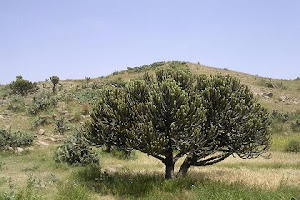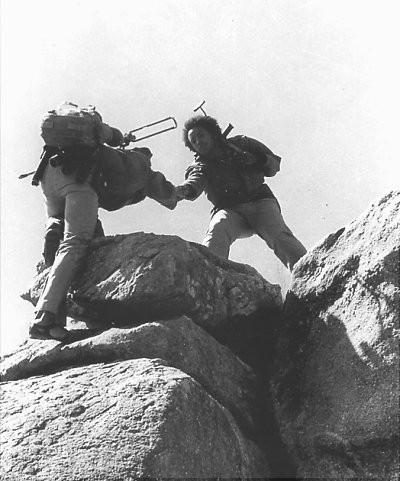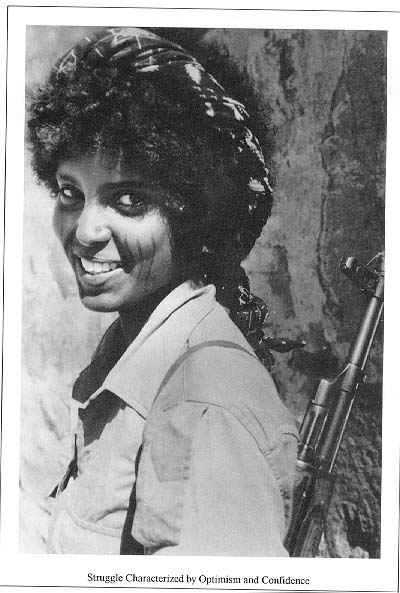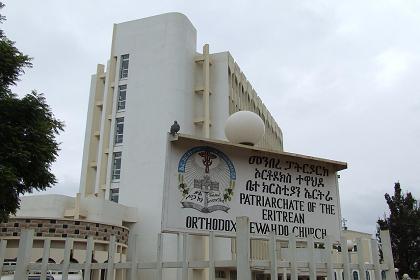It is rare to get a positive article (by positive I mean non-political article) about Eritrea in the big media these days. If any thing the name Eritrea pop-up in the news, it is most likely related to the conflict with Ethiopia, or with the problem in Somalia, or the human right abuses by PIA. ….it is a depressing picture always….and I hate it. I hate it because I know what picture these reports create here. I hate it because it is always skewed…only the bad things are worth of news! I hate it because the good sides never show up to the front page. I am not trying to deny the reality…. but when all you see is these news, you get fed up….It makes it seem as if there is nothing more than conflict down there…. I always hope, at least some times, they show also there is normal life down there…..it is not only war and conflict…it is not only aid and drought….it is not only refugee and camps. We have normal life too…we have hospitable society, we have hardworking society, we have peace loving society…we have harmony…we have a beauty to offer to the rest of the world too…. But these good qualities never make it to the front page, and if some how they make it…they soon will be overwhelmed and covered by the depressing reports.
It is only with such thirsty for these few moments, that you can understand why 5 of my friends forwarded me the recent article by Jeffery Jenttleman of the New York Times in one day….it seems they were running to capture that moment and capitalize the opportunity…The article, which appeared in the travel section of the paper, is one of the rare opportunities which account the other life and beauty in Eritrea.
It was also an opportunity for most of us to forward it to our friends from other countries. You can tell your friends all the good thing in the world about your country, but when the only thing they can find when they google Eritrea is war and conflict, it is not a convincing effort. It is more credible when a third party reports and shows the things you wanted to show the world that would have the credibility. In that case, the New York Times report was a rare opportunity…and like many of you, I forwarded it to my friends from other countries and my advisor. …Even though it doesn’t tell all the good things I would tell about Eritrea, it was the best report I can find to introduce him with my country.
So if some of you missed the article, or if you wanted to show your friends the other life in Eritrea, here is a link to the article.
http://www.nytimes.com/2008/10/05/travel/05journeys.html?_r=1&oref=sloginAnd there was also a similar article in Reuters earlier this year. Here is the link.
http://www.reuters.com/article/lifestyleMolt/idUSLD39903620080822
Saturday, October 18, 2008
Tuesday, October 7, 2008
PIRATES VERSUS WEAPONS DEALERS
There is an interesting development that comes from the coast of somalia. agroup of pirates highjaked a ship----a routine exercise in the coasts of somalia for years now. But this time, it drew the attention of world supper powers, unlike other pirates....an attention the death of hundreds of Somalis didn't get. Th estory also reveals a dirt work of international diplomacy. The story below details all the ins of that in an interesting way. Below is the link to the full story.
The pirates that captured the freighter Faina didn't know the ship was full of tanks. They also were unaware that by hijacking the vessel, they had ruined an international weapons deal that may have been illegally sending arms to Sudan
http://www.spiegel.de/international/world/0,1518,582513,00.html
also look the link below for a similar story from BBC.
http://news.bbc.co.uk/2/hi/africa/7656662.stm
The pirates that captured the freighter Faina didn't know the ship was full of tanks. They also were unaware that by hijacking the vessel, they had ruined an international weapons deal that may have been illegally sending arms to Sudan
http://www.spiegel.de/international/world/0,1518,582513,00.html
also look the link below for a similar story from BBC.
http://news.bbc.co.uk/2/hi/africa/7656662.stm
Thursday, October 2, 2008
Reading Dr. Russom
I am a big fun of Dr. Russom’s poems….I love them. But I didn’t get a chance to own his books until recently. I would get one poem from here and one from there. Finally, I got one of his books from Amazon (I wonder why I didn’t search in Amazon till now). Anyways, I got the book “we have our voices”…a selected Poems of Reesom Haile. The book has 56 poems along with their English translation by Professor Charles Cantalupo of Pen State University. For any one who has some interest in art/poetry, it is a great book to have it on your shelf. I didn't get his other books, and I hope I will get them, especially the one with the audio (and if you know how to get it, pls tell me).
Why I love Dr. Russom’s work:
I love them, because they are full of art; they have beauty in them, there is creativity in them. They have full of humor. They are not a full page essay like other….they are short and precise. Unlike other Tigrigna poets which are usually loaded with heavy words, Dr. Russom’s poems are constructed from the words of the ordinary guy. They are simple, yet they always have powerful message. They are original and you wonder how he used them to tell his message.
Well, I may not be good enough to explain the power of his work. You have to read them for your self to appreciate them. So, I encourage you to get the book. But for now get some flavor from the following two of my favorite (from among many in the book).
Quan-qua-na
E’zi quan-qua-na
E’zi Tigrigna
K-t-ea-m
Chew a’lewo!
K-lm-lm
Te-s-mi a’lewo!
K-qe-m-m
Ber-bere a’lewo!
K-f-g-m
A’xmi a’lewo!
Q-re-bwo qu-re-b’wo
Ae-s-te-ma-q-r’wo!
The message here is clear. The beauty is on how he creatively constructed the lines to express the message. It looks he is responding to those who claim ‘Tigrigna dereq eyu, n’fkri kgelx ayk’aln eyu…can’t be used to express …this and that”. Here, he is not only telling us that their claim is not true, that Tigrigna has all the qualities, but is also showing us it has the qualities through this poet and his choice of words.
The Second of my favorite is Desta. Here is a PDF version of it.

Here, besides the beauty of the poet, there is a hidden message. But, it depends on how you wanted to interpret it. And different people may see it differently…only him self knows what he wanted to say. To me, the message is in the last lines of the poem, as is in most of his work. What did he want to say by the last lines? You can stretch your imagination
Finally, to fully appreciate his work; you have to listen to and see his performance…his dress, his art of his performance makes him the legend poet. Here is what I found in youtube…performing in Festival 1998 with Fihra… his signature poem, alewuna/alewana.
Why I love Dr. Russom’s work:
I love them, because they are full of art; they have beauty in them, there is creativity in them. They have full of humor. They are not a full page essay like other….they are short and precise. Unlike other Tigrigna poets which are usually loaded with heavy words, Dr. Russom’s poems are constructed from the words of the ordinary guy. They are simple, yet they always have powerful message. They are original and you wonder how he used them to tell his message.
Well, I may not be good enough to explain the power of his work. You have to read them for your self to appreciate them. So, I encourage you to get the book. But for now get some flavor from the following two of my favorite (from among many in the book).
Quan-qua-na
E’zi quan-qua-na
E’zi Tigrigna
K-t-ea-m
Chew a’lewo!
K-lm-lm
Te-s-mi a’lewo!
K-qe-m-m
Ber-bere a’lewo!
K-f-g-m
A’xmi a’lewo!
Q-re-bwo qu-re-b’wo
Ae-s-te-ma-q-r’wo!
The message here is clear. The beauty is on how he creatively constructed the lines to express the message. It looks he is responding to those who claim ‘Tigrigna dereq eyu, n’fkri kgelx ayk’aln eyu…can’t be used to express …this and that”. Here, he is not only telling us that their claim is not true, that Tigrigna has all the qualities, but is also showing us it has the qualities through this poet and his choice of words.
The Second of my favorite is Desta. Here is a PDF version of it.

Here, besides the beauty of the poet, there is a hidden message. But, it depends on how you wanted to interpret it. And different people may see it differently…only him self knows what he wanted to say. To me, the message is in the last lines of the poem, as is in most of his work. What did he want to say by the last lines? You can stretch your imagination
Finally, to fully appreciate his work; you have to listen to and see his performance…his dress, his art of his performance makes him the legend poet. Here is what I found in youtube…performing in Festival 1998 with Fihra… his signature poem, alewuna/alewana.
Subscribe to:
Comments (Atom)











































